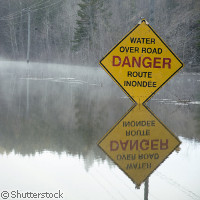CHORIST project targets improved rescue safety and communication systems
Natural hazards and industrial accidents wreak havoc on people's lives, and the lack of appropriate emergency management or planning can trigger human, environmental and financial losses. The EU-funded CHORIST ('Integrating communications for enhanced environmental risk management and citizens safety') project seeks to increase the rapidity and effectiveness of interventions following a natural or industrial disaster, thus optimising people's safety and communications between rescuers. The 17-member consortium will launch a demonstration of the project's prototypes on 26 and 27 March in Barcelona, Spain. Supported under the Information Society Technologies (IST) Theme of the Sixth Framework Programme (FP6), CHORIST received more than EUR 7 million in funding. While the existing tools for the management of environmental risk events at the European level work adequately, experts say they can be improved. For instance, communication between citizens, public safety actors and authorities should be more reliable. For the CHORIST partners, this means creating and implementing alert systems that warn authorities, as well as deploying an emergency telecommunication system for public safety responders. According to Patrice Simon, Research and Technology project manager at the Defence and Security Division of the European Aeronautic Defence and Space Company (EADS DS), the common operational picture of natural hazards and industrial risks are managed separately, risk by risk. 'In CHORIST, we've merged all this information into a single picture readable by non-specialists.' Nowadays warnings to the population are mainly sent through the media. This means that journalists are in the information chain between the authorities and the population. 'In CHORIST, we've integrated several channels to warn the population in parallel through several means like radio, TV, cell broadcast, sirens, and we've removed any human interference with the transmission of information from the authorities to the population,' Mr Simon said. While rapidly deployable networks are focusing on voice and SMS (short message service), the CHORIST partners have been 'working on providing video and large data files transfers to first responders', he explained. CHORIST is a collaborative effort involving research centres, academia and industry. 'Everyone's experience helped develop and run the proposal,' the EADS DS project manager said. 'This experience was gained during the many years when these participants worked on their own topics.' From an industry standpoint, as Mr Simon noted, the small and large enterprises lead the activities involved in CHORIST. 'The project allowed these people and these ideas to be put around the same table,' he explained. Those expected to benefit the most from this study, according to Mr Simon, are 'the authorities managing the disasters as civil protection, the fire brigades and police who are split in field teams acting in the front, and managing teams operating from behind, as well as the population indirectly, and the actors of the project', who will improve their tools and know-how. As for what lies ahead, Mr Simon said CHORIST should focus on two systems: situation awareness and rapid deployment. 'I believe that the warning systems have to be tested in large-scale scenarios,' he said. While it is difficult to clearly see what's in store for the future, Mr Simon is considering the enhancement of professional mobile radio networks being installed today with high data-rate facilities for public safety. 'This implies the big industries that built these networks will propose and sell these solutions,' Mr Simon remarked. And there are certainly many third parties who will benefit from the so called IP pipes - the high-speed Internet Protocol backbones capable of providing high bandwidth and reliable communications to develop and sell applications for groups - that can only be addressed by small, local enterprises.
Countries
Spain



